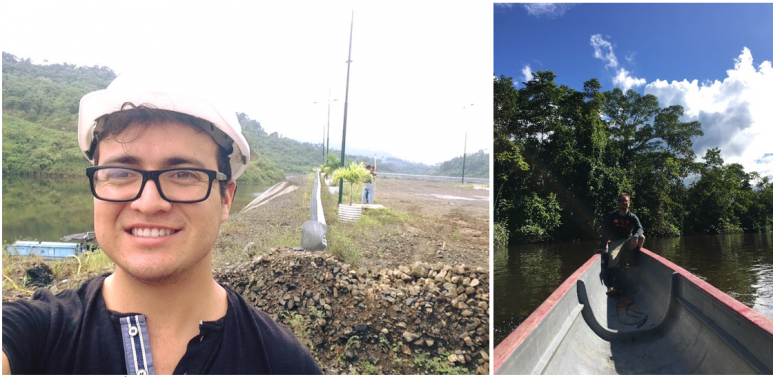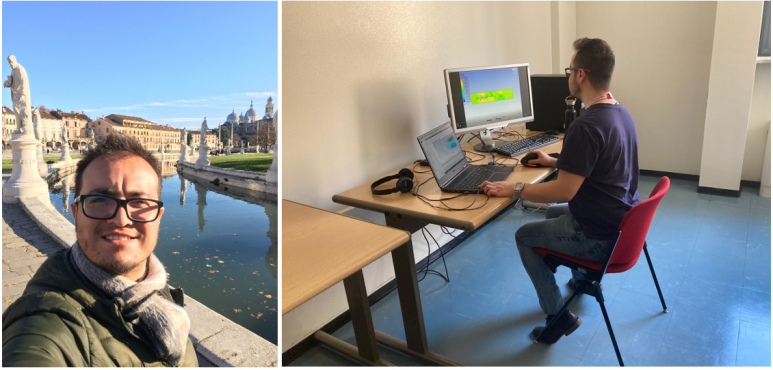My RIBES story: Marcelo Ruiz
I am Civil Engineer with specialization in Hydraulic sciences and Hydroinformatics. I got my Bachelor’s degree at the Escuela Politécnica Nacional (EPN) in Quito, Ecuador and my Master’s degree in Hydroinformatics and Water Management as part of the Erasmus Mundus Joint Master Program of the EuroAquae+ consortium coordinated by L’Université de Nice Sophia Antipolis in Nice, France. I have worked at the Faculty of Civil and Environment Engineering (FICA) and the Center of Water Studies and Research (CIERHI) at the EPN in, both, physical and numerical modelling of hydraulic phenomena, as well as in water resources management in Ecuadorian - Amazonian watersheds. I have done my MSc thesis in river hydrodynamics modelling at Deltares, in The Netherlands. I chose the RIBES project in fish hydrodynamics because I am particularly fascinated by natural turbulent flows and their impact on the river ecosystems and fish behavior. I found the RIBES project as a suggestion from the EuroAquae+ coordinators, applied to it, and now have the opportunity to work in a very interesting multidisciplinary project which links technical studies to biological assessment.
 Marcelo Ruiz by La Esperanza Dam (left) and in Cuyabeno National Park (right). Both places in Ecuador.
Marcelo Ruiz by La Esperanza Dam (left) and in Cuyabeno National Park (right). Both places in Ecuador.
I am hosted by the Università degli Studi di Padova at the Department of Industrial Engineering. My research will focus on the analysis of fish behavior driven by hydrodynamic variables at hydraulic structures. I will design and build a scaled model (1:10) of a low head (max 4m) hydropower facility to assess fish behavior in different types of passages. The design will be focused on Archimedean Screws, hydraulic wheels and different types of fish ways. I will record and track the individual and collective fish responses to different hydrodynamic cues generated by the structures. To scale the model, I will use similarity principles linked to Froude, Reynolds, Strouhal and Swimming dimensionless numbers. The model will also be coupled with a CFD simulation which aims to analyze more in detail fish behavior linked to the turbulent flow. In this sense, I will observe turbulent flow development related to intensity, periodicity, orientation and turbulent scales to find the efficient configuration which enhance swimming performance and decrease fish passage stress. The experimental facility and the research will be undertaken along with the biology department to assess, fish hydrodynamics, behavior and stress. The main objective of my research is to analyze how hydrodynamic variables such as velocity gradients variations, or turbulent Intensity may affect fish swimming performance and behavior at different types of hydraulic structures. Findings regarding efficient design of the machinery and structure, as well as scaled relationships between fish morphology and fluid dynamic parameters are the main expected results of the research.
 Marcelo Ruiz by Prato de la Valle (left) and at the Industrial Engineering Department at UNIPD. Both in Padova, Italy.
Marcelo Ruiz by Prato de la Valle (left) and at the Industrial Engineering Department at UNIPD. Both in Padova, Italy.
Andrea Marion and Paola Irato are my supervisor and co supervisor, respectively. I am working with a wide group of experts in the field of Fluid Dynamics Modelling, Hydraulics, and Biology such as Andrea Botacin and Mattia Zaramella, Gianfranco Santovito, and my ESR colleague, Sophia Schumann. I am very optimistic about the project and the research. I expect to gain the experience necessary to start my career in applied science on Ecohydraulics. In these few months I have learnt much more than I expected, and I hope to keep on learning and applying this knowledge on my research. By the end of 2021, I expect to have already set up both, the physical and the numerical models, and start with the measurements and simulations.
Finally, I am really happy to work as a part of the RIBES Network, and besides the hard times I am looking forward to collaborating and generating knowledge about Ecohydraulics with the all ESRs and Workgroup in the network.
